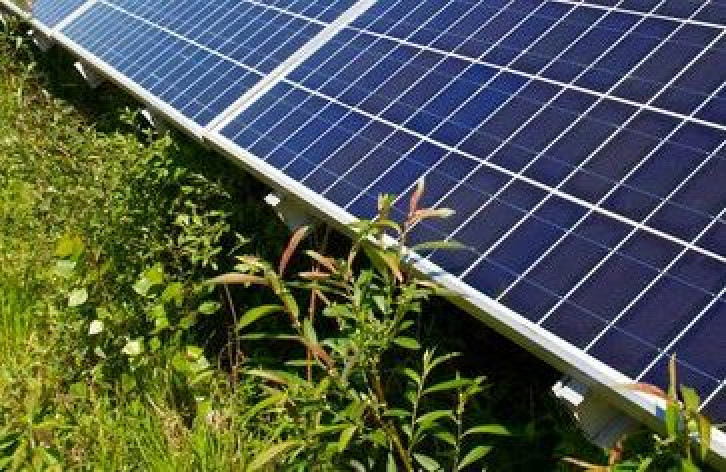An Indian-Malaysian group of scientists has conducted a review of several passive cooling techniques applied to PV modules and has found that two systems, based on coir pith and plants, provide the strongest improvement in terms of power yield.
Five techniques were tested by the researchers on a south-oriented, 50 W polycrystalline module with a tilt angle of 15 degrees located in Kumbakonam, in the Indian state of Tamil Nadu. They were: placing domestic plants around the panels at a distance of around 10cm; using a greenhouse net placed on top of the panels to prevent overexposure to sunlight; a combination of plants and the greenhouse net; placing water-soaked coir pith underneath the panels; and using phase change materials (PCMs).
The measurements were taken through an infrared thermometer from 9 a.m. to 4 p.m. and the performance of the five settings was compared with that of a reference panel without cooling assistance. “The overall uncertainty in the analysis is within 2%, based on the accuracy and precision of the instrument used,” the academics specified.
The panel without cooling showed an average voltage of 17.8 V and, with the cooling techniques, this value ranged from 18.1 V to 20.3 V. The highest value and, as a result, the best performance in terms of power yield, was provided by coir pith, which the academics attributed to its moisture-retaining property. The combination of plants and greenhouse net resulted in the second-best performance, at 20 V, followed by PCM cooling and plant cooling, which offered the third and fourth-best results, at 19.8 V and 19.3 V, respectively. The greenhouse net alone was able to generate 18.1 V, which is slightly higher than the module without cooling. “This can be attributed to the fact that the greenhouse maintained temperature and did not allow more sunlight to pass through it,” the research team explained.
The measurements also showed that the average power output of the module without cooling was 32.6 W and that the panes with cooling achieved values between 10.82 W and 36.38 W. This gap was explained by the academics as caused by current variations caused by the cooling systems. “For coir pith cooling, the average output power was 36.38 W,” they emphasized. “When the combination of greenhouse and plant cooling was employed, the average output power was 19.59 W.”
The strongest improvement for the module power yield – 11.34% – was achieved with coir cooling, while plant cooling, which uses air as the medium of coolant, delivered the second-best result with a 7.34% increase in power. The maximum reduction in the module operational temperature – 14 degrees Celsius – was achieved by the combination of plants with a greenhouse net while the greenhouse net alone was able to reduce the temperature by 12 degrees Celsius. “The coir cooling technique provided maximum power improvement along with the optimum temperature reduction,” the scientists added. “Plant cooling techniques provided better temperature regulation along with considerable power enhancement, compared to the uncooled PV module.”
The review of the passive cooling techniques can be found in the paper Sustainable passive cooling strategy for PV module: A comparative analysis, published in Case Studies in Thermal Engineering. The research team is formed by scientists from the Sastra Deemed University in India and the Universiti Malaysia Pahang, in Malaysia. The latter published an extensive review on all passive and cooling techniques applied to photovoltaics in October. That study presented active techniques including air-based cooling, liquid-based cooling, forced water circulation, liquid immersion cooling, water spraying, and passive methods such as PCM cooling, heat pipes, heat sink or fins and heat exchangers, microchannel heat exchangers, radiative sky cooling, nano-fluid based cooling, thermoelectric cooling, evaporative cooling, and spectrum filter cooling.
This content is protected by copyright and may not be reused. If you want to cooperate with us and would like to reuse some of our content, please contact: editors@pv-magazine.com.




By submitting this form you agree to pv magazine using your data for the purposes of publishing your comment.
Your personal data will only be disclosed or otherwise transmitted to third parties for the purposes of spam filtering or if this is necessary for technical maintenance of the website. Any other transfer to third parties will not take place unless this is justified on the basis of applicable data protection regulations or if pv magazine is legally obliged to do so.
You may revoke this consent at any time with effect for the future, in which case your personal data will be deleted immediately. Otherwise, your data will be deleted if pv magazine has processed your request or the purpose of data storage is fulfilled.
Further information on data privacy can be found in our Data Protection Policy.